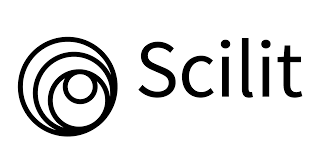Kajian Proses Produksi Asphalt Concrete Binder Course Menggunakan Asphalt Mixing Plant (AMP) Pada PT. Alhas Jaya Group di Aceh Utara
DOI:
https://doi.org/10.55616/prince.v1i2.322Keywords:
AMP, AC-BC, Process, Production, MaterialAbstract
Asphalt Mixing Plant (AMP) is used to produce asphalt mixtures. Type of asphalt used in this research is the Asphalt Concrete Binder Course (AC – BC). This study aims to determine the stages of the asphalt manufacturing process and material needed using the Asphalt Mixing Plant (AMP) in one day of production. The method used in this research is the interview method and the direct observation method to the location of the Asphalt Mixing Plant PT. Alhas Jaya Group. There are three stages to produce the Asphalt Concrete Binder Course (AC – BC). The first stage includes hard asphalt, heating, hot asphalt preparation, and weighing. The second stage begins with stockpiling aggregates, transporting aggregates into cold bin, drying/heating, filtering aggregates, and weighing. The third stage is the preparation of additional materials (if needed) and weighing. Producing asphalt concrete binder course for one day of production consist of 15-20 mm coarse aggregate of 90 tons/day or 70 m3/day, 0-5 mm fine aggregate of 72 tons/day or 49 m3/day, fine sand of 88 .2 tonnes/day or 60 m3/day, rock ash of 90 tonnes or 62 m3/day and asphalt of 19.8 tonnes/day or 19 m3/day.
References
S. Umum, “BUKU-SAKU-RANGKUMAN-SPESIFIKASI-UMUM-BINA-MARGA-2018-PEKERJAAN-HOTMIX-min”.
N. M. S. B. PEREIRA, “Analisa Karakteristik Lapisan Campuran Aspal Beton (Laston) Asphalt Concrete – Bearing Course (Ac-Bc) Ditinjau Dari Parameter Marshall Dengan Menggunakan Material Dari Quarry Mandoki Timor LesteNo Title,” Universitas Katolik Widya Mandira, 2019. [Online]. Available: http://repository.unwira.ac.id/2986/
dan P. I. W. Pusdiklat Jalan, Perumahan, Permukiman, DIKLAT PELAKSANAAN BETON ASPAL CAMPURAN PANAS, vol. 44, no. 1. 2021. doi: 10.47655/dialog.v44i1.470.
D. P. K. B. Aceh, “Asphalt Mixing Plant,” Banda Aceh, 2020. [Online]. Available: https://dinaspupr.bandaacehkota.go.id/2020/07/12/asphalt-mixing-plant/
K. direktorat jenderal bina marga 2018, “Spesifikasi Umum 2018,” Edaran Dirjen Bina Marga Nomor 02/SE/Db/2018, no. September, 2018.
I. K. Hairul Amri, Yossyafra, “ANALISA KEBUTUHAN PEMAKAIAN ALAT BERAT PADA PROYEK PEMBANGUNAN JALAN TUGU COKLAT – PARIT MALINTANG KABUPATEN PADANG PARIAMAN,” pp. 1–18, 2019.
SNI 3407:2008, “Cara Uji Sifat Kekekalan Agregat dengan Cara Perendaman Menggunakan Larutan Natrium Sulfat atau Magnesium Sulfat,” Badan Stand. Nas., 2008.
Departemen Pekerjaan Umum, “Cara Uji Keausan Agregat Dengan Mesin Abrasi Los Angeles, SNI 2417:2008,” Standar Nas. Indones., 2008.
SNI 2439, “Metode uji penyelimutan dan pengelupasan pada campuran agregat-aspal,” Sni 24392011, pp. 1–11, 2011.
Badan Standarsisasi Nasional, “Metode Uji Penentuan Persentase Butir Pecah pada Agregat Kasar,” Sni 76192012, 2012.
Badan Standarisasi Nasional, “SNI 03-4141-1996: Metode pengujian gumpalan lempung dan butir-butir mudah pecah dalam agregat,” Pusjatan-Balitbang PU, pp. 1–6, 1996.
BSN, “SNI 4137:2012 Metode uji penentuan ukuran terkecil rata-rata (UKR) dan ukuran terbesar rata-rata (UBR) butir agregat,” 2012, [Online]. Available: https://pesta.bsn.go.id/produk/detail/8759-sni41372012
SNI ASTM C117:2012, “Metode Uji Bahan yang Lebih Halus dari Saringan 75 M (No. 200) dalam Agregat Mineral dengan Pencucian,” Badan Stand. Nas. Indones., no. 200, 2012.
AASHTO, “Standard Specifications for Transportation Materials and Methods of Sampling and Testing, 35th Edition - Table of Contents and Change List,” 2014.
SNI 2432, “Cara Uji Penetrasi Aspal,” Badan Standar Nas. Indones., pp. 9–17, 2011.
2011 SNI 2441, “SNI 2441:2011 tentang Cara Uji Berat Jenis Aspal Keras,” Badan Standar Nas. Indones., 2011, [Online]. Available: https://binamarga.pu.go.id/uploads/files/648/sni-24412011-cara-uji-berat-jenis-aspal-keras.pdf
Published
How to Cite
Issue
Section
Copyright (c) 2022 PRINCE : Journal of Planning and Research in Civil Engineering

This work is licensed under a Creative Commons Attribution 4.0 International License.
Ciptaan disebarluaskan di bawah Lisensi Creative Commons Atribusi 4.0 Internasional.












